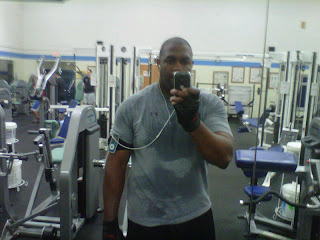
When it comes to packing on muscle, you must get your priorities in order. That means not getting caught up in whether your teaspoon of creatine is “rounded” or “heaping,” or whipping out a food scale so you can hit 3,500 calories exactly on your mass-gain diet, or feeling doomed to failure if you drink your whey shake 35 minutes after training instead of 30.
Hey, we know some of you obsess about this stuff I get E-mails every day. Our message to you? Stop it! Sweating such minutiae while ignoring important dietary details will get you a “heaping” pile of zero gains. Instead, use this mass-(Lean muscle, not fat & muscle) building strategy. All 10 items are valuable, of course, but start with the ones at the top. Remember, first things first.
How To Use It
This mass-building pyramid has one item at its tip, two on the second level, three items on the third level and four on the bottom, in order of importance (the higher up, the more vital it is to your progress in and out of the gym).
Each item includes specific recommendations for daily consumption (which we suggest you follow) by a hard-training individual. Enjoy your new muscle!
1) Calories
Mass-seeking athletes often try to micromanage their diets, emphasizing the latest and greatest supplement and often overlooking the bigger picture. When it comes to adding size, total daily caloric intake rules the roost. Sufficient calories coming from a mix of carbohydrates, protein and fat keep you anabolic, encouraging the body to lay down new muscle tissue and prevent catabolism, when muscle tissue is burned or broken down as a result of hard training or an inappropriate nutritional strategy.
The Way to Grow
Shoot for 16-20 calories per pound of bodyweight per day. A 175-pound male will require 2,800-3,500 calories daily.
2) Protein
The amino acids that make up protein are often likened to mason bricks. Creating a larger building requires plenty of bricks; similarly, adding mass requires adequate protein and aminos. Keep in mind that calories go hand in hand with protein. If you fall short in caloric intake, some of the amino acids will be wasted. Yet if you consume sufficient calories but not enough protein, you’ll experience limited growth.
The Way to Grow
Try to get 1 gram of protein per pound of bodyweight from top-notch sources such as fowl, lean meat, egg whites, fat-free dairy products and protein powders.
If you meet your daily calorie and protein needs and still fail to build bulk, up the protein to 1.25 grams per pound of bodyweight.
3) Carbs
Carbohydrates are all about one thing: glycogen. The carbs you consume are broken down into simple sugars and are then dumped into your blood as glucose to be used by your muscles, brain and other tissues. What’s not needed immediately is stored as glycogen in your muscles and liver, which serves as the chief source of fuel powering your training. Studies show that low reserves can lead to compromised training intensity and a loss of muscle mass. Basically, the greater your glycogen stores, the more energy your muscles have to train hard, which means they’ll grow more readily.
But here’s the catch: When your glycogen stores are filled up, the carbs left over are stored as fat. So, yes, you can have too much of a good thing.
The Way to Grow
Aim for 2.5 grams of carbohydrates per pound of bodyweight daily, and upward of 3.5 if you have a very fast metabolism. That puts a 200-pounder at around 500 grams of carbs per day.
4) Preworkout Nutrition
Hardcore training is a paradox. It’s the stimulus for change to get the body to add new muscle but the event itself actually tears the body down. The right pretraining meal can offset this effect, allowing you to spur your muscles to grow without sending the body into a muscle-wasting state.
The Way to Grow
Try 40 grams of whey protein mixed with water and a bagel or fat-free muffin 45 minutes before training. These easy-to-digest proteins and carbs will assist in fueling your training, preventing a dramatic fall in glycogen levels, and can change the body’s hormonal environment during training to prevent muscle breakdown and enhance muscle growth.
5) Post-Workout Nutrition
What you eat immediately after your training is just as important as your preworkout meal in influencing muscle growth. The job here is payback specifically, replenishing glycogen stores to spike levels of the anabolic hormone insulin and flushing the body with quick-digesting amino acids to resume the mass-building process following muscle breakdown from lifting.
The Way to Grow
Consume 70-90 grams of carbohydrates from cream of rice hot cereal, grape juice, white bread with honey or white rice mixed with raisins. To meet your protein needs, consume 30-45 grams from whey protein powder, egg whites or fish.
6) Meal Timing
All the nutrition advice in the world won’t amount to a hill of beans if you fail to implement the principle of grazing, or eating throughout the day. Spreading your food intake into 5-6 daily meals (eating about once every three hours) is crucial. Eating multiple meals helps control bodyfat by keeping your metabolism up, and it also aids in digestion, allowing for maximal absorption and helping you remain anabolic.
The Way to Grow
Eat six full yet moderate-sized meals per day, or four meals and two meal-replacement shakes, or alternate a regular meal and an MRP every few hours throughout the day until you’ve had three meals and three shakes.
7) Essential Fats
Omega-3 fatty acids from salmon, mackerel, trout, sardines and blue fish, along with flaxseed oil, walnuts and pumpkin seeds, provide another building block: essential fatty acids (EFAs). EFAs support the immune system, which aids in muscle and joint recovery. These healthy fats also help in the formation of glycogen, while tilting the balance of prostaglandins (hormonelike substances that regulate muscle growth and repair) in your favor.
The Way to Grow
Add 2 tablespoons daily of cold-processed oils to steamed vegetables, or combine with lemon juice and herbs and drizzle over grilled chicken, turkey or steak.
8) Water
Hard to believe that the dense, muscular body of seven-time Mr. Olympia Ronnie Coleman is more than 60% water. But as the backbone of life, water helps support blood volume, which affects “the pump” and offsets the production of free radicals that break down muscle. Dehydration causes not only a mild drop in metabolic rate but it indirectly impairs growth, as the total amount of water retained within muscles is a cue for anabolism.
The Way to Grow
The status quo has always relied on eight glasses of water a day, but hard-training athletes need up to twice that amount, since water needs rise with perspiration and total caloric intake.
9) Creatine
Plain and simple take creatine, get stronger. Creatine is the wonder supplement that increases muscle levels of phosphocreatine, a vital source of energy during weight training. When the amount of weight you throw around increases, your muscles grow. Creatine works with water by dragging greater than normal amounts of it into cells, which assists in muscle growth.
The Way to Grow
Take 5 grams of creatine with your post-training meal. The meal’s high carbohydrate content helps drive creatine into muscles, maximizing its uptake.
10) Glutamine
What happens when you violate the components of this mass-building pyramid? You fail to grow or, worse yet, you shrink. One reason has to do with the immune system. When you train too often and lack the right nutritional strategy, muscle repair is nearly impossible. That’s where glutamine can help. Coupled with proper nutrition, this amino acid can support muscle growth and the storage of glycogen.
The Way to Grow
Take 5-10 grams of glutamine before training plus 5-10 grams with your postworkout meal.














